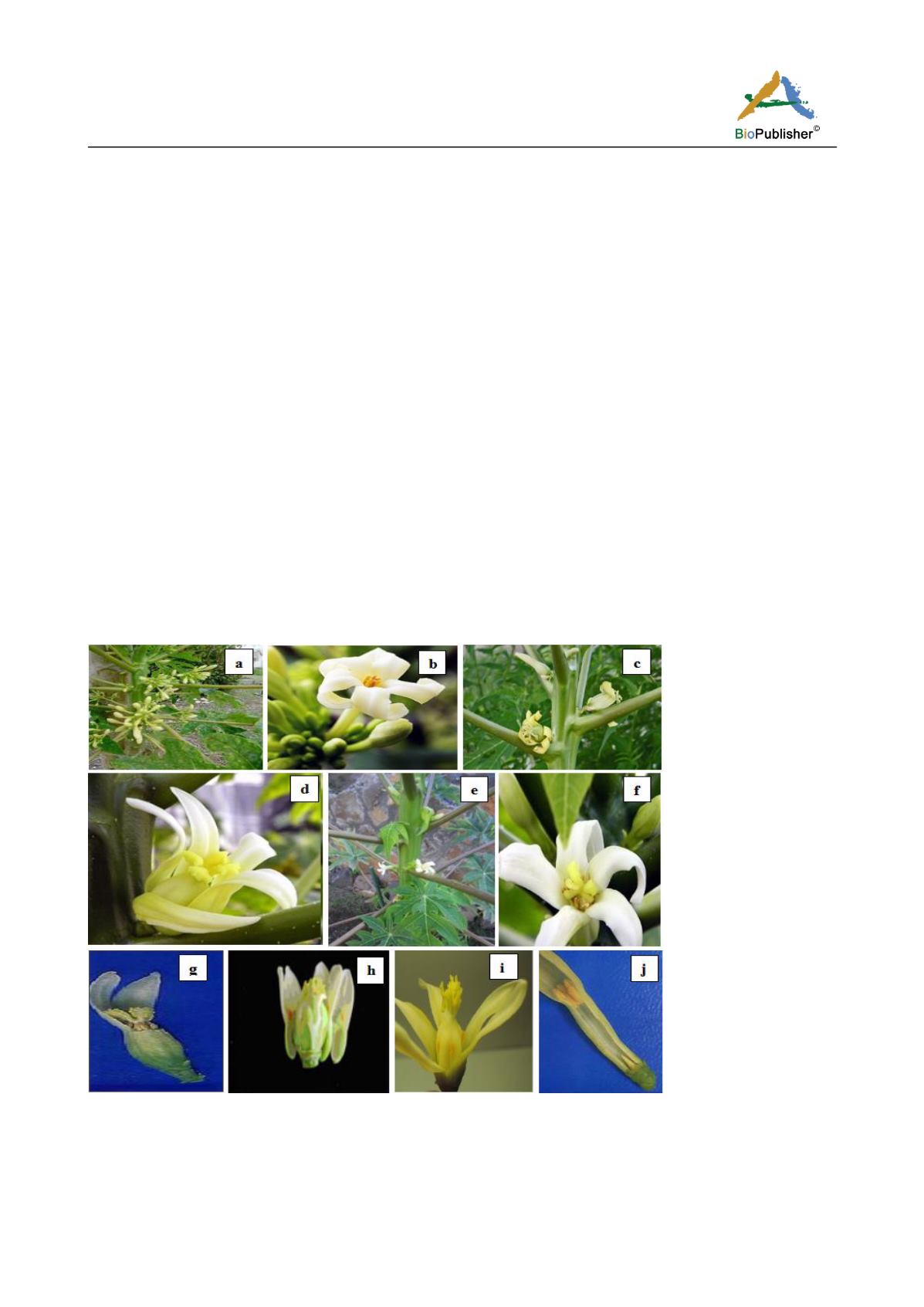
Molecular Plant Breeding 2016, Vol.7, No.28, 1
-
18
2
should be removed from the field which increases production cost (Bedoya et al., 2007). However, sex type
cannot be identified phenotypically at early seedling stages until the plant flowers (i.e. 3-4 months after
germination). This process increased the cost, labor and waste time. In order to save this it is necessary for farmers
that the sex type of this crop is identified before transplanting.
1 Sex Phenotypes and Floral Morphology
1.1 Types of flowers
Papaya is polygamous species and possesses three sex forms namely; female, male and hermaphrodite (Yu et al.,
2008a). Flowers are slightly fragrant, fleshy and waxy, yellow to cream in color. Papaya flowers are basically
characterized into three types: staminate flower, pistillate flower and hermaphrodite flower. They borne on
cymose inflorescences and appears in the axils of the leaves. The inflorescence type varies according to the sex of
the plants. Flowering occurs generally within 9-12 months after germination. Male trees are characterized with
long inflorescence, bearing dozen of flowers having yellow in color, arise in clustered form and possess ten
stamens without ovary (Figure 1 a, b). Female trees are characterized with short inflorescence having few flowers,
are white or cream in color with large rounded superior ovary without stamens (Figure 1 c, d). Hermaphroditic trees
are having short inflorescence, bearing bisexual flowers and functional ovary along with stamens (Figure 1 e, f).
Hermaphrodite plants are further classified into four types: elongate, intermedia or carpelloid, pentandria and
barren or sterile types. Elongate type is having ten stamens in two clusters, smooth and elongated functional ovary
(Figure 1 g). Intermedia or carpelloid type possesses irregularly ridged ovary and two to ten mostly distorted
stamens (Figure 1 h). Pentandria form is characterized with five stamens attached with the base of rounded ovary
(Figure 1 i). Barren or sterile type is having ten functional stamens but the ovary aborts (Figure 1 j) (Ming et al.,
2007; Silva et al., 2007).
Figure 1 Types of papaya plants and flowers on the basis of different sex phenotype
Note: (a) Male plant (b) Male flowers in clustered form, (c) Female plant, (d) Female flower, (e) Hermaphrodite plant, (f)
Hermaphrodite flower, (g) Hermaphrodite elongate flower, (h) Hermaphrodite carpelloid flower, (i) Hermaphrodite pentandria flower,
and (j) Hermaphrodite sterile flower (Idea taken from Ming R, Yu Q, and Moore P.H. 2007. Sex determination in papaya. Semin. Cell
Dev. Biol., 18:401-408)


